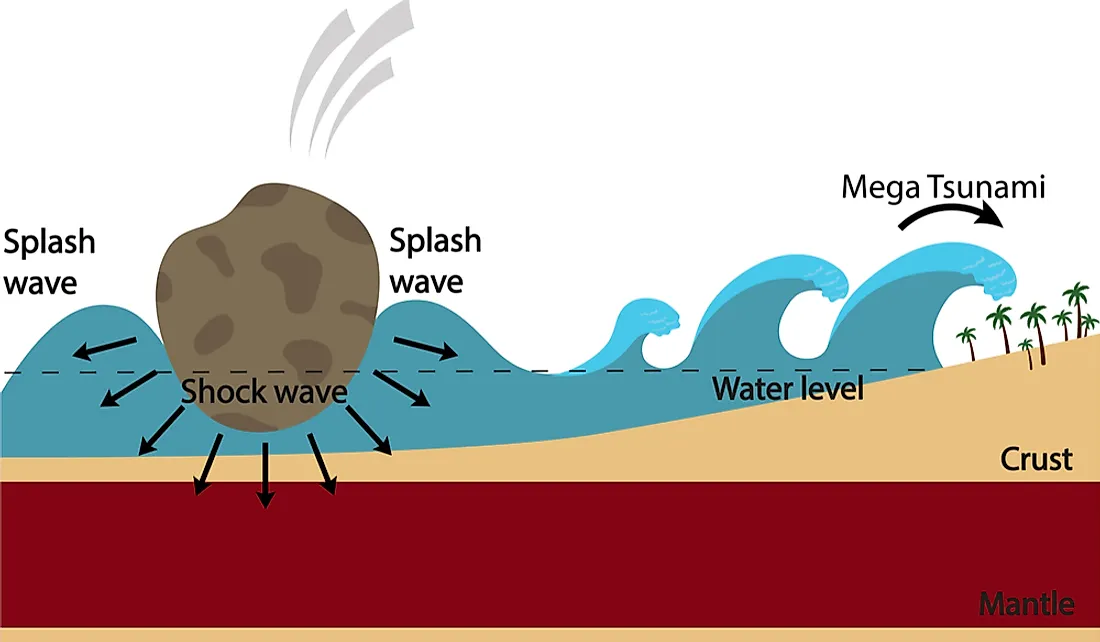What Is a Megatsunami?

Megatsunamis are extremely rare and destructive phenomena. Although similar to the well-known tsunamis, megatsunamis cause incomparable destruction along the coastline. A megatsunami is a very large wave that is formed by the sudden displacement of water. It may have an initial wave amplitude of hundreds or even thousands of meters as the water splashes upwards and outwards due to the impact or displacement. Two heights are often quoted for a megatsunami; the height of the wave in water and the height the wave surges upon reaching the land. Some of the megatsunamis experienced recently include the 1958 Lituya Bay megatsunami and the 1883 eruption of Krakatoa.
Megatsunami Vs. Tsunami
A megatsunami is a term that is used to refer to a tsunami with a larger initial wave amplitude than a normal tsunami. Normal tsunamis result from the movement of the sea floor and have smaller wave height offshore. They range from barely noticeable waves to walls of water of about 300 feet high. They also have a long wavelength (often hundreds of kilometers) and may pass unnoticed at sea. However, their heights increase drastically as they approach the land since the base of the waves pushes the water column on the surface upwards.
Megatsunamis are caused by large landslides and other impact events such as a meteorite crashing into the sea. Landslides near water bodies that cause displacement may result from earthquakes or volcanic eruptions. The crashing of huge asteroids or landslides causes displacement of huge volumes of water. A megatsunami, unlike a normal tsunami, can cause large scale destruction and nothing can be done to stop it.
Megatsunamis in Recent History
1883 Eruption of Krakatoa
The eruption of Krakatoa in Indonesia begun on August 26, 1883, and peaked the following day when most parts of the island and its surrounding was destroyed. The eruption caused a megatsunami that killed hundreds of people. Ships as far as South Africa were rocked by the tsunami. The megatsunami is believed to have been caused by a fast flow of volcanic matter entering the sea. The resulting megatsunami destroyed the town of Merak.
1958 Lituya Bay Megatsunami
About five megatsunamis are believed to have taken place in Alaska's Lituya Bay. The most recent one is the 1958 Lituya Bay Megatsunami. The 1958 Lituya Bay earthquake took place on June 9, 1958, on the Fairweather Fault, causing a rockslide of about 40 million cubic yards into the Lituya Bay. The impact of the rockslide was heard over 50 miles. It resulted in the displacement of large volumes of water to an elevation of 1,710 feet, leading to a megatsunami. The volume of displacement was also increased by the air that was dragged along by the viscosity effect from the rockfall.
Spirit Lake, Washington
On May 18, 1980, Mount St. Helens erupted, leading to a massive landslide. The magma trapped beneath the summit bulge exploded, resulting in a Plinian eruption. The volcanic material surged into Spirit Lake, leading to a megatsunami. The lake water was pushed to a height of 853 feet above the level before the eruption.











